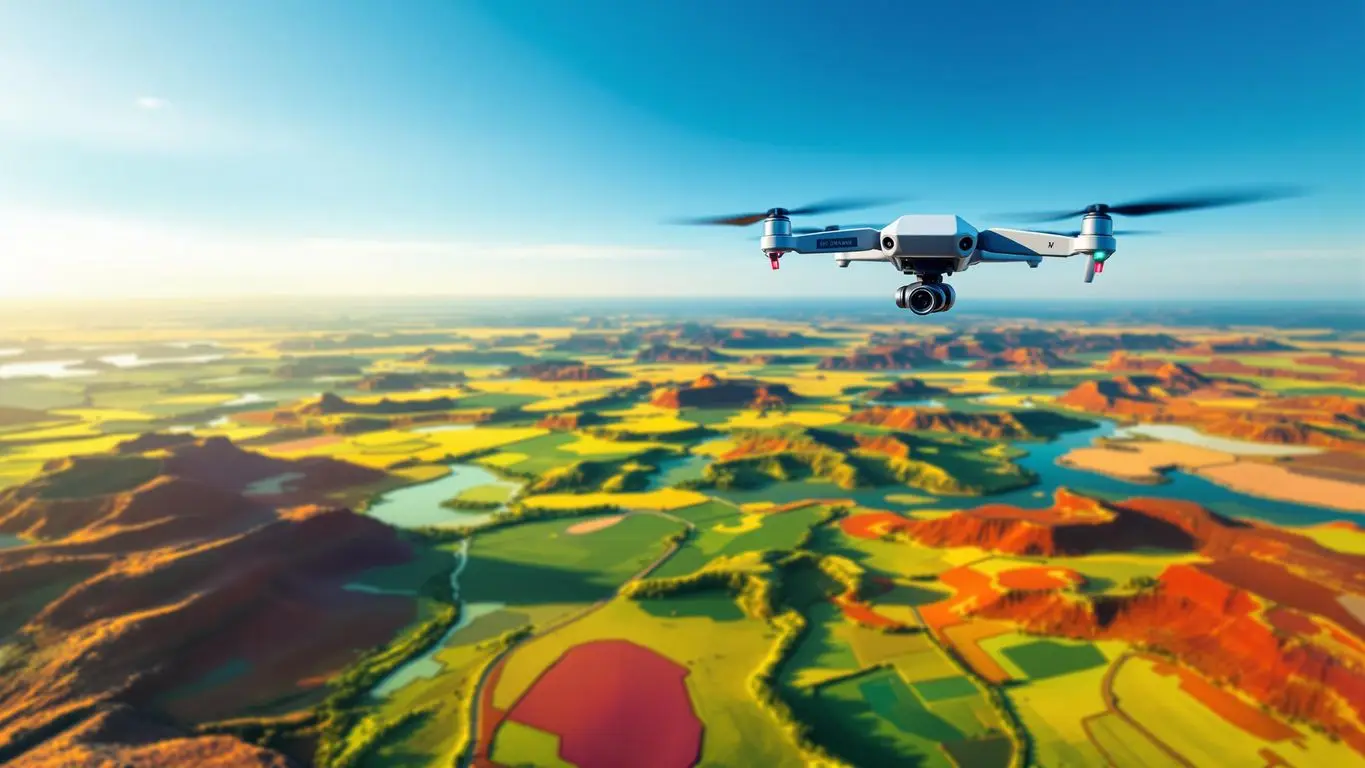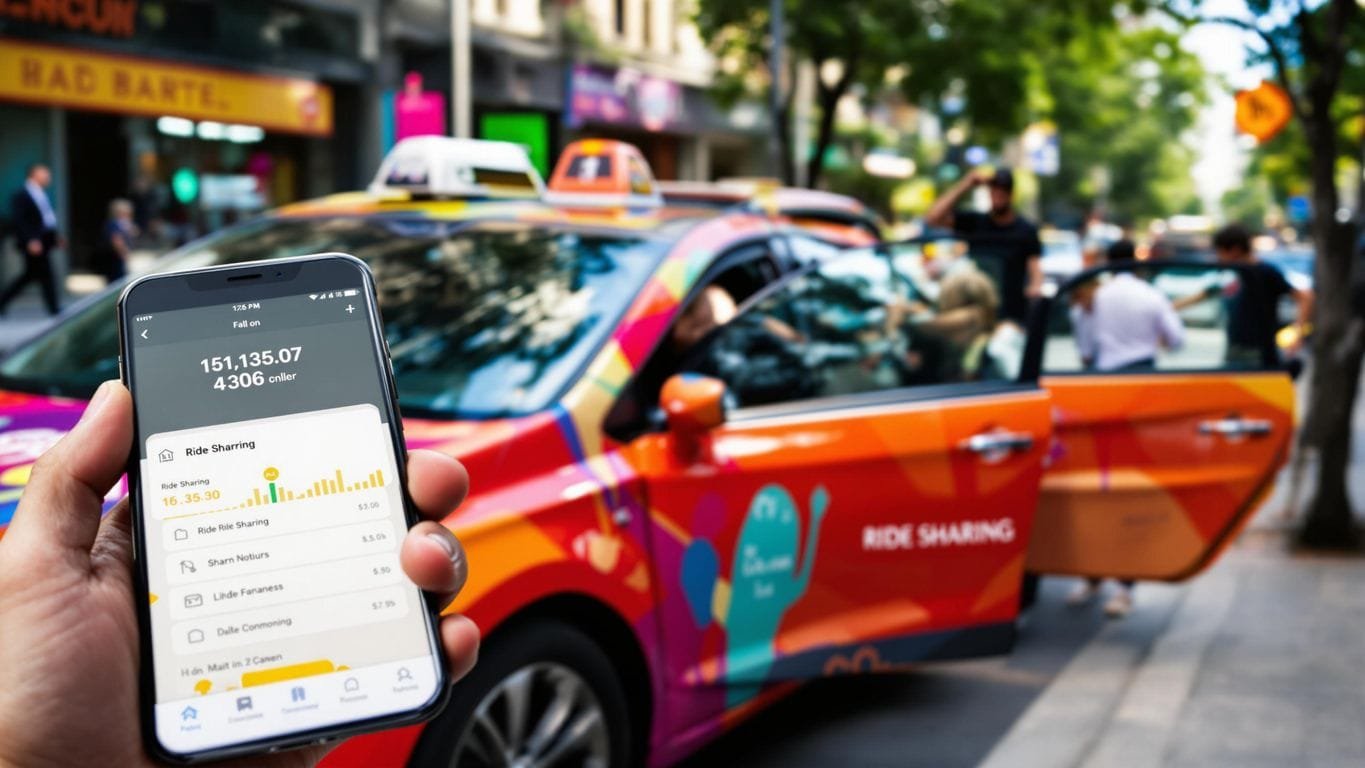

Drone Photography: Building a Profitable Business in 2024
Thinking about starting a drone photography business in 2024? It’s a smart move. The drone market is booming, with more opportunities than ever to make a profit. From real estate to events, drones are changing how we capture the world. But how do you turn this tech into a thriving business? In this guide, we’ll walk you through the essentials—from picking the right gear to marketing your services. Let’s get you flying high in the drone business world.
Key Takeaways
- The drone photography market is expanding rapidly, offering numerous opportunities for new businesses.
- Choosing the right equipment is crucial for capturing high-quality images and videos.
- Understanding legal requirements, like FAA regulations and insurance, is essential for operating safely.
- Building a strong brand and marketing effectively can set your business apart from competitors.
- Staying updated with technology trends can give your business a competitive edge.
Understanding the Drone Photography Market

Current Trends in Drone Photography
In the world of drone photography, things are moving fast. Drones are not just toys anymore; they’re tools for professionals. From capturing breathtaking landscapes to filming dynamic videos, drones offer new perspectives that were once impossible. Today, drones are being used in real estate to showcase properties, in weddings to capture special moments, and even in agriculture for monitoring crops. The market is buzzing with innovation, and every year brings new tech and better cameras that push the boundaries of what’s possible.
Key Players in the Industry
The drone photography market is dominated by a few big names, but there are also many smaller companies making a mark. DJI is a heavyweight, known for its reliable and advanced drones. Parrot and Yuneec are also significant players, offering unique features that cater to different needs. Then there are specialized companies focusing on niche markets, like agriculture or inspection services, which are growing rapidly. As the market expands, new players are emerging with innovative solutions, making it an exciting time for the industry.
Market Growth Projections
The drone photography market is on the rise, expected to grow significantly in the coming years. According to the drone photography services market, it’s projected to jump from $0.65 billion in 2023 to $0.78 billion in 2024. This growth is fueled by increasing demand across various sectors, including real estate, media, and agriculture. As technology advances and regulations become clearer, more businesses and individuals are likely to invest in drone photography, pushing the market even higher. This is a promising time for those looking to enter the field or expand their existing operations.
Essential Equipment for a Drone Photography Business
Choosing the Right Drone
Picking the perfect drone is like finding the right partner for your business. Your drone is the backbone of your operations, so you want one that’s reliable and suits your needs. When starting a drone photography business, you should consider drones that offer at least 12MP camera resolution and 4K video capability. Some popular choices include the DJI Air 3, which stands out for its performance and features, making it a top pick for photographers and videographers alike. Think about flight time, stability, and ease of control. If you’re into inspections or mapping, you might need something with more advanced sensors and longer flight capabilities.
Camera and Accessories
Your drone’s camera quality can make or break your photos. Look for cameras that offer high resolution and good color accuracy. Accessories like ND filters, extra batteries, and high-capacity memory cards are also essential. These tools help you capture stunning images and keep your drone flying longer. Don’t forget about a reliable ground control station to manage your flights efficiently.
Maintenance and Upkeep
Keeping your equipment in top shape is crucial. Regular maintenance ensures your drone operates safely and efficiently. This includes checking propellers, calibrating sensors, and updating software. Always have spare parts on hand, like propellers and batteries. A well-maintained drone not only performs better but also extends its lifespan, saving you money in the long run.
Investing in high-quality equipment and maintaining it well can significantly impact your business’s success. It not only enhances your service quality but also boosts client satisfaction.
Building a Strong Brand for Your Drone Business
Creating a Unique Selling Proposition
Alright, let’s talk about standing out. In a world where drones are buzzing everywhere, having a unique selling proposition (USP) is your ticket to being memorable. Think of your USP as the heartbeat of your brand—it’s what makes you different. Maybe you offer the fastest delivery times, or perhaps your drone photography captures angles that others can’t. Whatever it is, make sure it’s clear and speaks directly to your audience.
Developing a Professional Portfolio
A well-crafted portfolio is like your business card, but way cooler. It’s not just about showcasing your best work; it’s about telling a story. Include a variety of projects that highlight your skills and creativity. Use before-and-after shots to show your impact, and don’t shy away from detailed captions explaining your work process. Potential clients love to see the magic behind the scenes.
Effective Marketing Strategies
Now, onto marketing—because even the best brands need a spotlight. First, identify your target audience. Who are they? What do they want? Once you know this, you can tailor your marketing efforts to speak directly to them. Consider these steps:
- Social Media Engagement: Use platforms like Instagram and Facebook to share your stunning aerial shots and engage with followers. It’s a great way to build a community and attract new clients.
- Partnerships: Collaborate with local businesses or influencers who can help spread the word about your services.
- Content Marketing: Create blogs or videos that showcase your expertise and provide valuable insights into the drone industry.
Building a brand is more than just a logo or a catchy name; it’s about creating a lasting impression that resonates with your audience. Keep refining your approach and stay true to what makes your business unique.
And remember, effective marketing is key to reaching your audience and growing your business.
Navigating Legal and Regulatory Requirements

Understanding FAA Regulations
Flying drones isn’t just about capturing stunning aerial shots; it’s about adhering to a set of rules that keep everyone safe. The Federal Aviation Administration (FAA) rules are like the backbone of drone operations in the U.S. Following these regulations is non-negotiable for any business. Here’s a quick rundown:
- Rule 107 Overview: This is your go-to regulation if you’re flying drones commercially. You need a Remote Pilot Certificate, and there are specific rules about where and how you can fly.
- Flight Restrictions: Fly below 400 feet, keep the drone in sight, and don’t fly over people. Night flying? You’ll need a waiver for that.
- Registration and Reporting: Register your drone with the FAA and report any accidents that cause serious injury. Keep your records tidy.
Keeping up with FAA updates is key. Regulations can change, and staying informed helps you avoid nasty surprises.
Obtaining Necessary Licenses
Getting your paperwork in order might not be the most exciting part of starting a drone business, but it’s crucial. Here’s what you need to know:
- Research Licensing Requirements: Different locations and services might need different licenses. Check with local and federal agencies.
- Remote Pilot Certificate: Pass the FAA Part 107 test to get this. It’s your ticket to flying legally.
- Additional Permits: Depending on what you’re doing, you might need extra permits. Think aerial photography or inspections.
Insurance and Liability Considerations
Insurance is your safety net. In the world of drones, things can go wrong, and when they do, you’ll want to be covered. Consider these points:
- Liability Insurance: This covers you if your drone damages property or injures someone.
- Hull Insurance: Protects the drone itself against damage or theft.
- Evaluate Coverage Needs: Every business is different, so assess what coverage makes sense for you.
Insurance isn’t just a formality. It’s about peace of mind, knowing you’re protected from the unexpected.
Maximizing Profits in Drone Photography
Pricing Your Services Competitively
Finding the right price for your drone photography services can be tricky. You want to stay competitive but also make sure you’re covering your costs and making a profit. Pricing competitively means understanding your market—who else is offering similar services and what are they charging? It’s a balance of not underpricing yourself while still being attractive to clients. Consider offering tiered packages to cater to different client needs, and make sure to highlight the unique value you bring to the table.
Expanding Service Offerings
To really boost your income, think about expanding what you offer. Drone photography isn’t just about taking pretty pictures. You could branch out into areas like real estate, agriculture, or even weddings. Each niche has its own demands and pricing structures. For example, real estate agents might need regular shots of properties, while farmers could use drone technology to monitor crop health. By diversifying, you not only increase your potential market but also protect yourself against downturns in any one sector.
Building Long-term Client Relationships
Creating lasting relationships with clients is key to sustaining your business. Repeat business is often easier and cheaper to secure than constantly finding new clients. Make sure you’re providing excellent service that encourages clients to come back. Regular follow-ups, personalized service, and loyalty discounts can go a long way. When clients feel valued, they’re more likely to refer you to others, which means more business without additional marketing costs.
Building a successful drone photography business isn’t just about having the best equipment or the most skills. It’s about understanding your clients’ needs and consistently delivering great results. This approach not only enhances customer satisfaction but also secures a steady stream of work, ensuring your business thrives in the competitive market.
Leveraging Technology and Innovation

Incorporating AI and Machine Learning
In the world of drone photography, AI and machine learning are game-changers. These technologies can automate tedious tasks, like sorting and editing images, making your workflow much more efficient. Imagine a system that learns your style and preferences, then applies them to your photos automatically. This not only saves time but also ensures consistency across your portfolio. Plus, AI can help with predictive maintenance of your drones, alerting you before a minor issue becomes a major problem. As these technologies evolve, staying updated will keep your business competitive.
Utilizing Advanced Editing Software
Advanced editing software is like a magic wand for photographers. It can transform a good photo into a great one with just a few tweaks. Programs like Adobe Lightroom and Photoshop offer powerful tools for adjusting lighting, colors, and even removing unwanted objects. But the real trick is knowing how to use these tools effectively. Spend time learning the ins and outs of your chosen software to truly harness its potential. With practice, you’ll be able to create stunning images that captivate clients and set your work apart from the competition.
Staying Ahead with the Latest Trends
The drone industry is always buzzing with new trends. Whether it’s the latest in drone technology or new styles in aerial photography, keeping your finger on the pulse is crucial. Join online forums, attend industry events, and subscribe to relevant publications to stay informed. This not only helps you anticipate changes but also allows you to adapt quickly. By staying ahead, you can offer your clients the most innovative services, ensuring they keep coming back for more.
In 2024, the integration of AI, advanced sensors, and improved flight capabilities is transforming drones into essential tools for various industries, enhancing their functionality and applications in business. Explore the future of drone technology and how it can benefit your business today.
Case Studies of Successful Drone Photography Businesses

Lessons from Industry Leaders
In the world of property photography using drones, some businesses have soared high by tapping into this niche market. These companies have shown that understanding client needs and delivering quality images can lead to substantial growth. A key takeaway is the importance of specialization—focusing on specific sectors like real estate or events can set you apart from the competition. These leaders often emphasize the need for continuous learning and innovation to keep up with the fast-paced technological advancements.
Innovative Business Models
Drone businesses are not just about flying and capturing images; they are about creating unique value propositions. Some successful entrepreneurs have embraced a hybrid model, combining drone photography with other services like videography or virtual tours. This approach not only broadens their market reach but also provides multiple revenue streams. Flexibility in adapting business models to include new technologies, such as AI for image analysis, can also open up new opportunities.
Overcoming Common Challenges
Running a drone photography business comes with its own set of hurdles, from regulatory compliance to technical issues. Successful businesses often share stories of overcoming these challenges through strategic planning and community engagement. Building a network of industry contacts and staying informed about FAA regulations are crucial steps in navigating these obstacles. Moreover, offering comprehensive services and maintaining high standards of customer service can help build a loyal client base, ensuring long-term success.
Explore how drone photography businesses have thrived by using innovative techniques and creative marketing strategies. These success stories can inspire you to start your own journey in this exciting field. Visit our website to learn more about how you can turn your passion into profit!
Wrapping Up: Your Drone Business Adventure Awaits
So, there you have it. Starting a drone photography business in 2024 is not just a dream—it’s a real opportunity waiting for you to grab. With drones becoming more popular and the market growing fast, there’s no better time to jump in. Whether you’re snapping stunning aerial shots or offering unique services like drone mapping or inspections, the sky’s the limit. Just remember, it takes more than a drone and a camera. You’ll need a solid plan, a bit of creativity, and a willingness to learn and adapt. But if you’re ready to put in the work, you could be flying high in no time. So, why wait? Get out there and start capturing the world from above!
👉 Join Our Community for More Insights!
Subscribe to The Millionaire Playbook for:
- Weekly strategies to grow income streams.
- Proven tools and templates to fast-track success.
- Exclusive guides to launch your Fastlane business.
Frequently Asked Questions
What is drone photography?
Drone photography involves taking pictures and videos from the sky using drones. This offers unique angles and views that regular cameras can’t easily capture.
How much can I earn with a drone photography business?
Earnings can vary, but some drone photographers make over $1,000 an hour. It depends on your skills, location, and the services you offer.
Do I need a license to start a drone photography business?
Yes, in most places you need a license to fly drones commercially. In the U.S., you need to pass the FAA’s Part 107 test to become a certified drone pilot.
What equipment do I need for drone photography?
You’ll need a good quality drone with a high-resolution camera, extra batteries, and possibly editing software to enhance your photos and videos.
Are there any legal rules I should know about?
Yes, there are rules about where and how high you can fly your drone. It’s important to understand local laws and regulations to avoid fines.
Can drones be used for events and special occasions?
Absolutely! Drones are great for capturing weddings, sports events, and other special occasions from a unique perspective.








